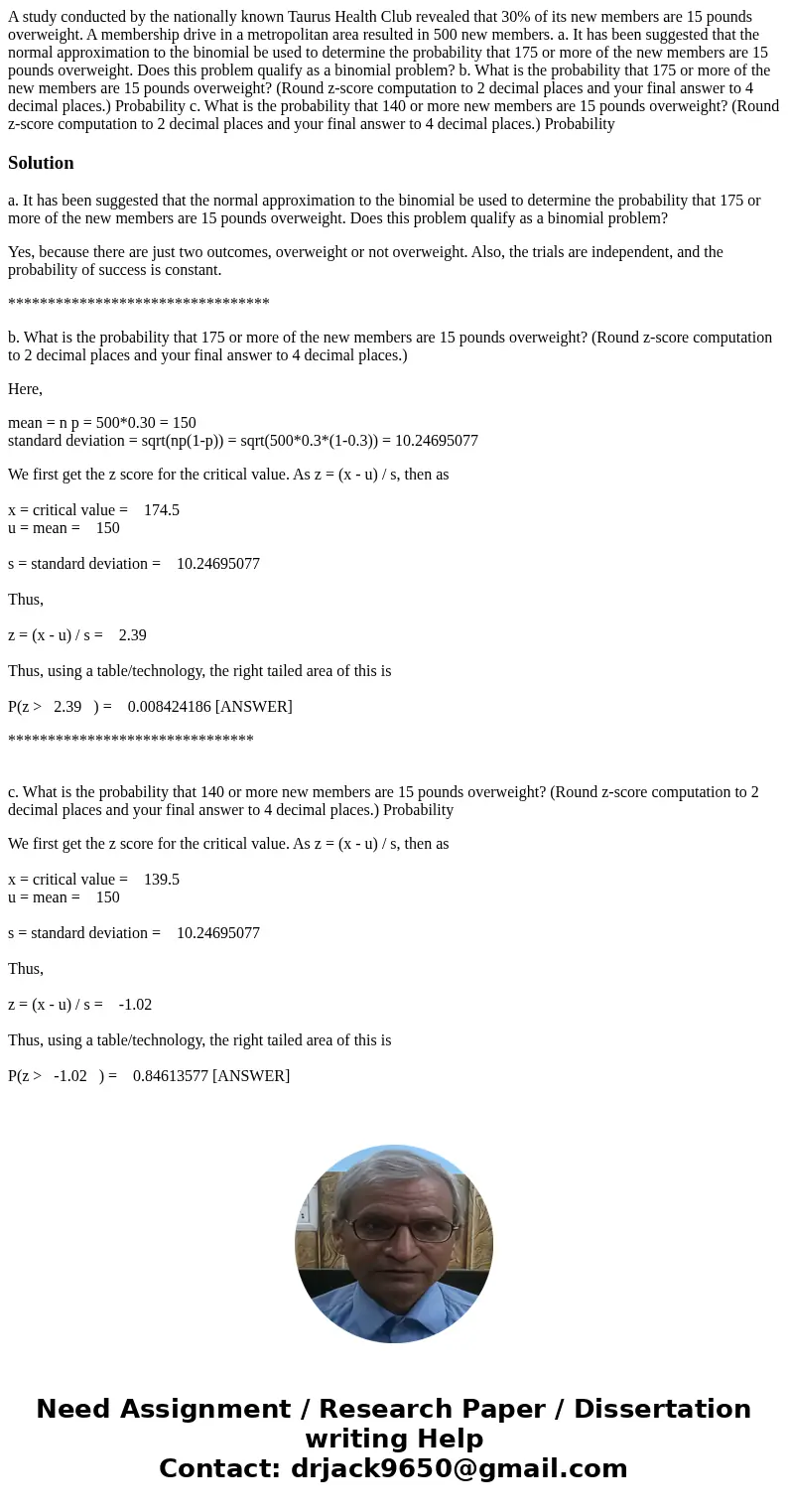A study conducted by the nationally known Taurus Health Club
A study conducted by the nationally known Taurus Health Club revealed that 30% of its new members are 15 pounds overweight. A membership drive in a metropolitan area resulted in 500 new members. a. It has been suggested that the normal approximation to the binomial be used to determine the probability that 175 or more of the new members are 15 pounds overweight. Does this problem qualify as a binomial problem? b. What is the probability that 175 or more of the new members are 15 pounds overweight? (Round z-score computation to 2 decimal places and your final answer to 4 decimal places.) Probability c. What is the probability that 140 or more new members are 15 pounds overweight? (Round z-score computation to 2 decimal places and your final answer to 4 decimal places.) Probability
Solution
a. It has been suggested that the normal approximation to the binomial be used to determine the probability that 175 or more of the new members are 15 pounds overweight. Does this problem qualify as a binomial problem?
Yes, because there are just two outcomes, overweight or not overweight. Also, the trials are independent, and the probability of success is constant.
*********************************
b. What is the probability that 175 or more of the new members are 15 pounds overweight? (Round z-score computation to 2 decimal places and your final answer to 4 decimal places.)
Here,
mean = n p = 500*0.30 = 150
standard deviation = sqrt(np(1-p)) = sqrt(500*0.3*(1-0.3)) = 10.24695077
We first get the z score for the critical value. As z = (x - u) / s, then as
x = critical value = 174.5
u = mean = 150
s = standard deviation = 10.24695077
Thus,
z = (x - u) / s = 2.39
Thus, using a table/technology, the right tailed area of this is
P(z > 2.39 ) = 0.008424186 [ANSWER]
*******************************
c. What is the probability that 140 or more new members are 15 pounds overweight? (Round z-score computation to 2 decimal places and your final answer to 4 decimal places.) Probability
We first get the z score for the critical value. As z = (x - u) / s, then as
x = critical value = 139.5
u = mean = 150
s = standard deviation = 10.24695077
Thus,
z = (x - u) / s = -1.02
Thus, using a table/technology, the right tailed area of this is
P(z > -1.02 ) = 0.84613577 [ANSWER]

 Homework Sourse
Homework Sourse